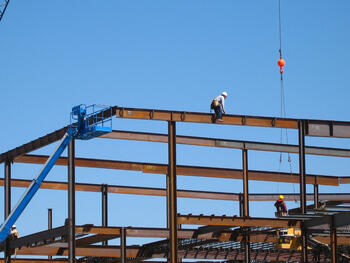
Almost all news coverage of the current election season has focused on cultural issues such as gender, race, and immigration. What the media have missed are deep socioeconomic trends driving parts of the country in divergent political directions. President Trump has overseen a significant transformation in the geography of the nation’s growth and prosperity. Instead of clustering along the coasts—as many progressives may have preferred—the nation’s economic expansion is now increasingly benefiting red states, notably in the southeast, Texas, and the intermountain West.
Indeed, according to the most recent Bureau of Economic Advisors report, income growth is strongest in pro-Trump states. In the first quarter of 2018, the income-growth leader by far was Texas, with 6 percent growth, followed by Louisiana, North Dakota, Montana, Arkansas, and Iowa. All are growing faster, often considerably faster, than liberal states like California, Washington, Oregon, Massachusetts, and New York.
Strong wage growth in blue-collar sectors helps red states, while a weaker stock market threatens high-income coastal economies. Some of the same urban areas that benefited most under President Obama’s tepid recovery now show signs of languishing. By the end of last year, key metro areas including New York, Los Angeles, Chicago, and Boston were falling behind competitors like Nashville, Orlando, Phoenix, Dallas, and Salt Lake City. The Bay Area economies, which ranked in the top five for income growth over the last decade, ranked 15th and 16th last year. Tech and business-service growth, though still strong in Silicon Valley, is now much more rapid in Sunbelt hotspots.
Read the entire piece at City Journal.
Joel Kotkin is executive editor of NewGeography.com. He is the Roger Hobbs Distinguished Fellow in Urban Studies at Chapman University and executive director of the Houston-based Center for Opportunity Urbanism. His newest book is The Human City: Urbanism for the rest of us. He is also author of The New Class Conflict, The City: A Global History, and The Next Hundred Million: America in 2050. He lives in Orange County, CA.
Photo: Bill Jacobus, via Flickr, using CC License.












